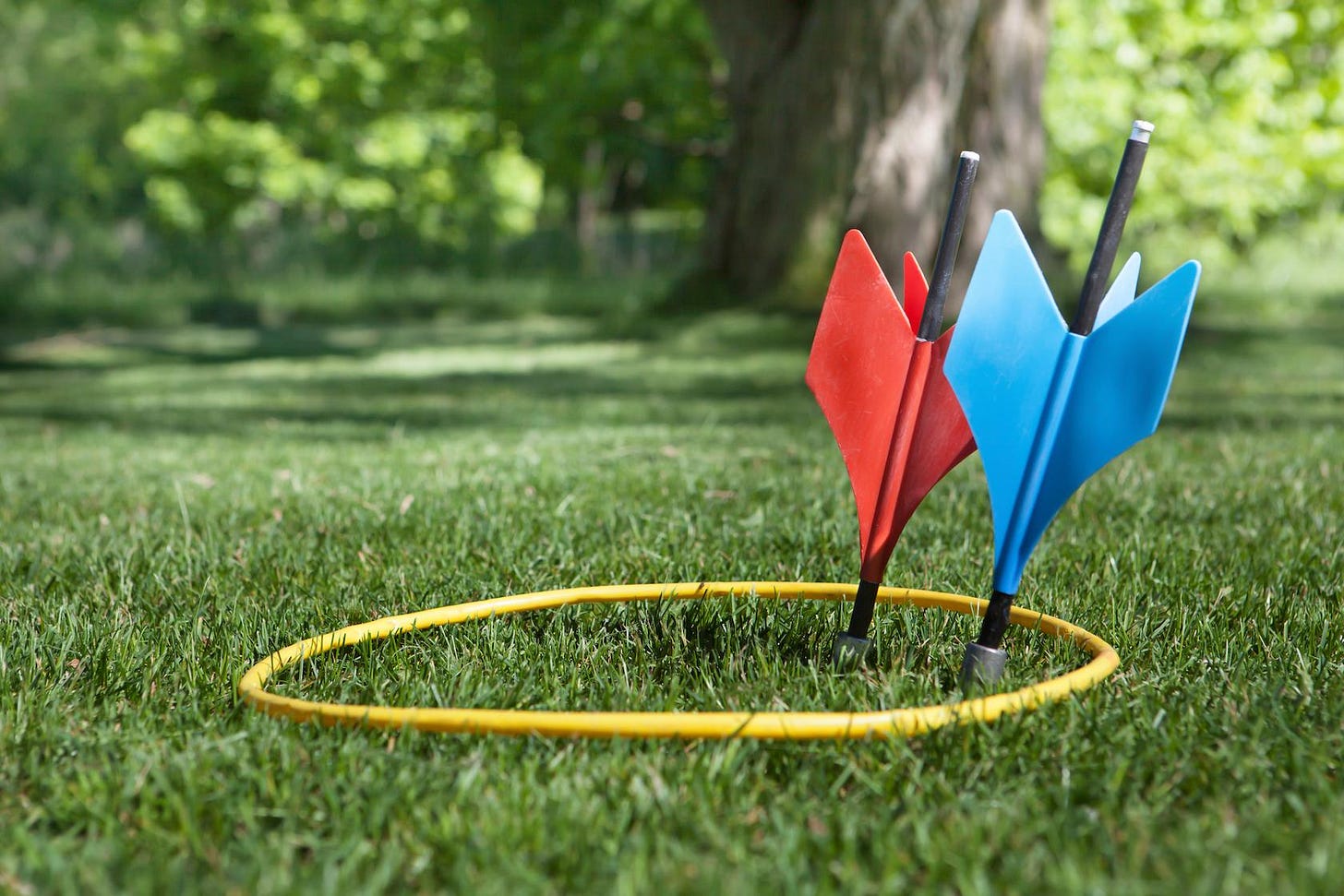HMF News on Media Literacy: The Good, The Bad, and The Ugly
Plus Part One of The CM Files
I. The Good
Several of our Allied Organizations have been doing wonderful things so we wanted to give them a shout-out.
a) Our newest “Allied Organization”, Fairplay, has partnered with an offshoot organization, Phone-Free Schools Movement, to release an Administrator’s Toolkit to help guide school districts who are moving towards common-sense restrictions on screens in our schools—with more toolkits and other resources forthcoming.
b) A few months back, the Center for Humane Technology hosted author Jonathan Haidt, author of the best-selling and zeitgeist-capturing book The Anxious Generation for a talk at The Commonwealth Club in San Francisco. More from him, below.
c) Media Literacy Now has developed an online database of media literacy lesson-plans. It’s styled as a Science Learning Resource to help K-12 instructors find reliable scientific information:
The lessons are a representative cross-section of what’s available in Media Literacy Education. In my opinion, ymmv. Most are good, but they range from the excellent (like this one dealing with mis/disinformation ) to the problematic (like this one that models kids on how to act badly on social media so that…they won’t? Wut?). I also recommend pre-screening the elementary-level lessons, to make sure the educational “juice” is worth the social media exposure “squeeze”, See (a) and (b), above and more on this below.
d) Finally, Pro Publica continues to set the bar for independent, investigative journalism.
We will continue to have more updates as our allied organizations continue to break new ground!
II. The Bad
The Problem
The numbers regarding the negative effects of algorithmic social media are becoming commonly known.
√ In the past 13 years, incidence of major depression in 12-17 year olds has more than doubled (that’s 2.9 million newly depressed teens, 3/4ths of which are girls);
√ ER visits by 10-14 year olds for self-harm have tripled (4/5ths are girls);
√ Or with teen suicides (15-19 year olds): A 30% increase over that time frame. That’s nearly one-thousand in raw numbers.
This is to say nothing of the other negative effects from the addictive technologies: like declining academic performance, sleep disturbance, lack of time spent in the real world with friends and classmates, and lack of exercise. A pretty succinct summary is here. Just ask in the comments below if you want any specific studies regarding any of these.
Also, of course, unregulated and/or unsupervised access to the internet also exposes young people to other dangers: cyberbullying, hyper-accelerated peer pressure, transient and performative online “identity” curation, and, yes, in the rare but most awful instances even predators.
Finally, more and more, the studies show that the earlier the exposure to screens, the more it affects their later happiness. It physically retards their brain development and, as reported just yesterday, it harms their ability to self-regulate their emotions.
All of these trends started around 2011—when kids all started using smartphones and (simultaneously) when social networking sites (where we all curated our experience) turned over our feeds to algorithms, designed to maximize our attention (via outrage and dopamine loops).
The Fake Debate
The main avatar of raising awareness in this area has been Social Psychologist Jonathan Haidt. For me, the most remarkable thing about Haidt is that he maintains several google docs that contain links to research that not only support his conclusions, but they also include studies that argue the other direction. In all my years, I’ve never seen anyone do that before (although the best professors used to do that in college classes all the time…ah, ancient memories). His comments are always very measured. He’s careful to not get too far out over his skis. IMO, this alone should tell you he is worth listening to.
His adversaries are out there. Unlike him, they tend to be more shrill in tone and quite cock-sure of themselves. Again, another clue.
But let’s focus on substance over style. The counter-studies all say two main things: i) This is about correlation, not causation. and ii) There’s not much correlation, anyway. The main paper that everyone seems to cite (which Haidt also links to) is the 2019 Nature (magazine) studes from Professors Andrew Przybylski and Amy Orben entitled “The Association Between Adolescent Well-being and Digital Technology use”. I would highlight two things:
First of all, Prof. Przybylski’s research is largely funded by Big Tech. So, it reminds one of when tobacco-funded researchers seventy years ago were saying the same thing about smoking and lung cancer.
And, second, once you stop talking about all digital media and just focus on algorithmic social media and girls, the corellation is actually quite great. This was somewhat reinorforced by Przybulsky’s research partner, the very next year when Orben revisited the topic. Among her findings was that “Systematic reviews examining older populations highlight that one in 8–12 studies find a null result, while the rest find a positive association between screen time and unfavourable psychological outcomes.” Now, her language is so obfuscating that you’d need to be a lawyer to read that...
—But, fortunately, I am. So: She just said that around 90% of studies found a correlation between screen time and bad psychological outcomes.
And, even beyond that, anyway: Causation has also been proven! (scroll down to Section “1”).
I could go on, but just as a reality check: We shouldn’t need to debate this at all. Every time we see a room of unsupervised preteens/teens all staring, heads bowed, like zombies into their phones and not talking to each other, we should realize what is self-evident.
We all see it. We all know it.
This is not normal. This is not healthy.
The Real Debate
I used to love playing “Jarts” when I was a kid in the 70s. These javelin darts were 13-inch long, half-pound aluminum rods tipped with steel, dressed up in plastic feathers like darts. They were meant to be hurled upwards in an arc like horseshoes; but I used to throw them like actual darts.
Anyway, I didn’t know at the time they were deadly. Honestly, if I had, I probably would have liked them even more (y’know…’cause I was just a kid)!
See, it turns out that when a half-pound lawn dart falls fifteen feet it impacts with the force of 23,000 pounds per square inch! And after a family lost their younger child to an errant Jart thrown over a fence by their other child, they led a campaign to investigate these dangerous toys. By asking the Federal Product Safety Commission (CPSC) to investigate, they found out that lawn darts had sent over six-thousand people to the emergency room over eight years. By Christmas 1988, Jarts were pulled from the shelves.
Historically, less than 20 kids die from such asphyxiation each year—yet, warning labels about choking hazards are all over all kinds of toys. Is that overkill? Some would say yes: I’ve actually heard educators ask, “Well, how many kids really died from the Tide Pods challenge, anyway?”
Well, the answer happens to be 8 (since 2012). But, how many should need to before we do something?
See, that’s the real debate: How much risk of damaging children are we prepared to live with?
I remember when my children were very young and we were discussing getting our first home security system. The winning argument for getting it went something like: “Well, if their bedroom was filled to the brim with diamonds, we wouldn’t hesitate to get one, right? And we care infinitely more about them, soooo…”.
Truly, it wasn’t about fortification, though—the feature we were most excited about were the door chimes. The little DING echoing through the house whenever any door was opened gave us great peace of mind. We would know if/when any of the little ones were heading somewhere else. It wasn’t sheltering them. It was just about staying aware of what they were doing.
All of these questions have to do with risk management. That’s why it makes sense to insure the car, or the house—but not the stapler, right? And that’s why health insurance exists at all: the odds are against anything happening to you…but, that won’t be much consolation to you when it does, will it?
What you want, what I want, what we all want is “Peace of Mind”.
And this is the sort of assessment that is infusing both sides of the “screen-time and kids” debate. Will your 13-year old daughter be seduced and kidnapped from your front yard by a stranger from two-thousand miles away (like the link above)? Yeah, probably not.
But, when the risk for failure is so high, what (just for example) could make allowing your child to have an app like SNAPCHAT—that is specifically designed to promote anonymous adults’ access to your kids—possibly be worth it? What are we willing to put into prevention (i.e., “insurance” in our analogy)?
And what does that look like?
III. And The Ugly (When MediaLit gets…Childish)
For decades, Media Literacy was a little-known, but important field of study that (for anyone who was listening) helped folks use critical thinking to navigate the media landscape. The main precept: You are the product.
That still holds true. Our attention is still being bought and sold by Big Tech’s Social media just like it was with television during the eras of Big Media.
But the problem (as is becoming increasingly clear) is that with the powerful new digital technologies and recommendation algorithms, this latest media has become…something else. No longer is media about communication, with occasional drug-like side-effects (“Hey, did you hear my funny answering machine message? Ha Ha, what a hoot!”). Now, our main online forms of communication/news/entertainment are now basically just drugs, dressed up the trappings of media.
Similar to, say, gummi marijuana edibles.
If we were “food literacy” educators (aka nutritionists), while it might be technically useful to explore the data points around gummi edibles—you know, calorie content and nutritional value, as though it were any other food—it doesn’t make much sense to do so while ignoring it’s main feature: which is what it does to our brain.
That’s why all the old (and a few new) talking points around MediaLit aren’t sufficient. For the past three years, after my family formed our foundation, I’ve been talking to Media Literacy educators and researches just about every week. And more and more, I’ve wondered. Why weren’t MediLit educators out in front of all this?
In those discussions, I’ve found a common theme in their talking points. They tend to be…childish. Now, I’m not being pejorative—I am using the word descriptively: it really does mostly seem to be about adolescent wish fulfillment.
Over the next few weeks, I’ll be outlining how those talking points are all based on faulty premises. Things like:
√ We should be morally panicked about authorities—so much so, that we need to teach kids to live in a “Post-Truth” world.
√ We should avoid fear-based teaching.
√ Best education practice is to withhold knowledge—which leads to greater understanding by students.
…and there are others, too. Please note: There will be kernels of truth beneath all of these. And everyone means well. But they are ultimately based on faulty premises, and they turn out to be self-defeating pedagogy, anyway.
I am constantly looking for solutions WRT Media Literacy best practices. I certainly don’t have all the answers. Still I am talking with many about how to create Media Literacy curriculae that are empowering without being unsafe.
In the meantime, the first rule needs to be ‘do no harm’. So, I’m first focusing on these ‘Childish MediaLit’ ideas. Stay tuned. More CM Files to come.







